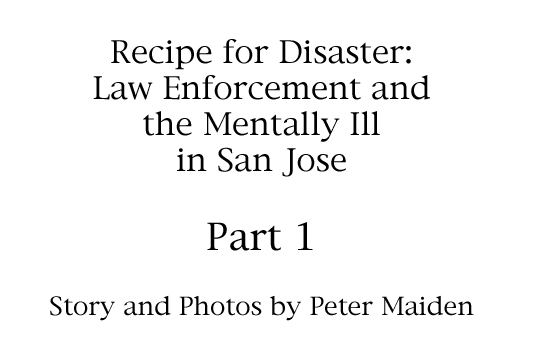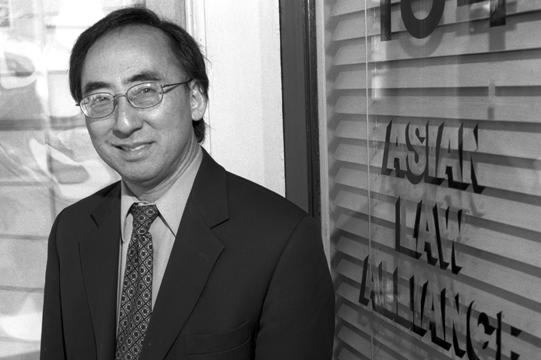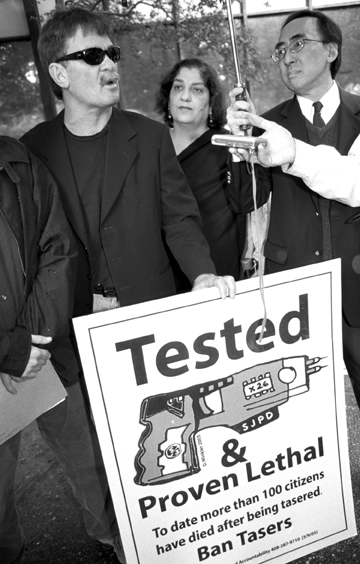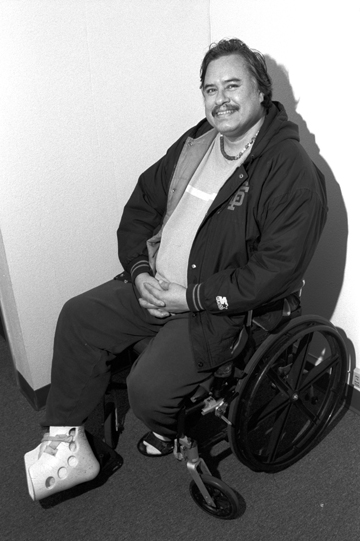From the Open-Publishing Calendar
From the Open-Publishing Newswire
Indybay Feature
Recipe for Disaster: Law Enforcement and the Mentally Ill in San Jose
This story is being run in two parts: This first part is being published June 12, and the second part will go up June 19.

INTRODUCTION: A SHOCKING REALITY
Officers of the San Jose Police Department (SJPD) have shot three mentally ill people to death in the last two years. All the killings took place within minutes of the arrival of police into a situation. None of the shooters were punished. The SJPD has the highest rate of police killings to overall homicide rate of any of the 50 largest cities in the United States, according to a survey by the Washington Post. Many find the situation shocking, but feel helpless to do anything about it. Through its actions, the SJPD is sending a message to the community: “We make the rules, and we are the judge, the jury and the executioner.”
Life for the mentally ill imprisoned in the San Jose Main Jail is a nightmare that has never met the light of day. There are strong allegations of mistreatment there. Prisoners know what is going on through their experience, and it is talked about in the community, but it is kept out of the public eye. There is no oversight over the actions of correctional officers except by their own supervisors, who seem to condone the mistreatment.
Police come into contact with mentally ill people in the community often. Correctional officers deal with them on a daily basis in the Jail. Yet like most people, or perhaps more so, law enforcement personnel suffer from ignorance and fear of mental illness. If you add to their psychological mix the violent cop or guard mentality, you have a recipe for disaster. How that plays out, and what can be done about it, was the focus of my investigation for this article.
In today’s installment (June 12), I will examine the three police killings of mentally ill people, and take a look at an activist group that came together to help do something about police misconduct. In the next installment (June 19), I will look how the SJPD is attempting to train officers to deal with the mentally ill, and take an inside look at conditions for the mentally ill in the Jail.
Who are the mentally ill? Psychiatrists put mental diseases into three categories: schizophrenia, bipolar disorder and major depression. People with these conditions are vulnerable to crisis, especially under stress. They can at times become psychotic and experience hallucinations or delusions, which can distort their view of the reality around them. This makes them hard to predict, and for that reason they are seen as a threat by law enforcement. How much of a threat they really are is open to debate.
In the larger social context, the landscape is pretty bleak for mental health clients. Ronald Reagan, when he was Governor of California, stripped public mental health programs of funding, effectively turning people who were institutionalized out into the streets. The vast problem of the mentally ill homeless in California began with this callous gesture. Meanwhile, with managed care, insurance companies have practically destroyed the tradition of talk therapy by psychiatrists, turning psychiatrists into prescription writers who meet with clients for a few minutes at a time instead of getting to know them as people. The pharmacological corporations are enjoying a big upsurge in sales of psychiatric medications, and they try to influence public policy to further increase their profits.
THE CASE OF BICH CAU THI TRAN
Two days before the death in San Jose of her daughter, Bich Cau Thi Tran, a bird flew into Hoang Thi Nguyen’s Viet Nam home. The bird then expired. Ms. Nguyen, at her daughter’s funeral, told a reporter that it was an omen.
Ms. Tran was 4 foot 9 inches tall and weighed 98 pounds. She spoke limited English. Officers Chad Mitchell and Tom Mun came to her home July 13, 2003 in response to a call that one of her two toddlers was seen alone. There had been some tension that day between Ms. Tran and her boyfriend, Dang Bui, which Mr. Bui related to the officers. He said, “She’s been acting crazy all day.” He could not have known one of the officers was going to flip out and shoot. When Officer Mitchell entered the kitchen, Ms. Tran gestured with a ten-inch dao bao, an Asian vegetable peeler, and cried out something in Vietnamese. Officer Mitchell reportedly said nothing more than “Hey, hey!” before shooting Ms. Tran dead with a single 9mm hollow-point bullet that pierced her heart and aorta. Officer Mitchell later said the dao bao looked like a cleaver.
There were several attempts at spin control by the SJPD around the killing of Ms. Tran. Days later the SJPD showed the vegetable peeler to the press, somehow believing it would look to the public like a cleaver, which it did not. Also, the idea was put out that police only have split seconds to decide whether or not to use a gun, a common and problematic law enforcement argument. And SJPD officers went on Vietnamese radio to try to calm the community down with public relations propaganda. The revelation that Ms. Tran was mentally ill worked in the interest of the SJPD. The Santa Clara County Coroner reported that Ms. Tran had been prescribed Risperadol, an anti-psychotic medication, that she had a bottle in her possession, and that she did not have any in her system when she died.
The Grand Jury examines all officer-involved killings, usually in secret. In the Tran case, because of the level of public outcry, the Grand Jury was opened to the public. Much of Ms. Tran’s psychiatric history was presented in the hearing room. She had had several crises. Officer Mitchell, on the other hand, was allowed to wear his uniform and gun in the Grand Jury courtroom, as if the hearing were business as usual for your average cop. It is likely that bias towards the police and stigma against mental illness on the part of the Jurors played a large part in their decision to clear Officer Mitchell of any wrongdoing.
THE CASE OF JOHNNIE NAKAO
At a San Jose Radio Shack on August 12, 2004, a couple of clerks thought Johnnie Nakao, the son of a deputy sheriff, was shoplifting a CD player. They confronted him and called police. Soon patrol officers Gary Jungling and Kevin McMillion arrived on the scene, and they shocked Mr. Nakao with a Taser. The Taser shoots wires that hook into a victim and carry a shock that is extremely painful and incapacitating. The officers expected Mr. Nakao to collapse; instead he ran out of the back door of the store in an attempt to get away. Cornered by Officers Jungling and McMillion in an alley, Mr. Nakao pulled a pocketknife. It was probably an ill-thought-through gesture of self-defense lest the shock be applied again—which it was. They then fatally shot him with their handguns—once in the upper chest and twice in the abdomen.
Although Mr. Nakao was known by his family to have a drug problem, the Medical Examiner reported that at the time of his death his system was clean. Mr. Nakao was a mental health client. Just before his death he felt that he was, in psychiatric language, “decompensating,” which means that his mental condition was rapidly worsening. He was self-aware, and took action: he went to Emergency Psychiatric Services at Valley Medical Center three times in the two weeks leading to his death, asking to be let in. He was turned away each time. His death was noted in local news, but not closely examined, and his killing was found by a closed Grand Jury to be justified.
THE CASE OF ZAIM BOJCIC
The Taser was also a factor in the death at the hands of the SJPD of 40-year-old Zaim Bojcic. He was a Bosnian immigrant, a victim of torture and camps in his homeland. He hung out with fellow Bosnians at a Starbucks on Winchester Boulevard. He was killed there on September 26, 2004. Officer Donald Guess, who was getting coffee at the Starbucks, was asked by someone to talk to Bojcic about his smoking. The Officer and the Bosnian failed to communicate. Bojcic’s friends offered to intervene to clear up the misunderstanding. Stupidly, Officer Guess ordered the friends away, and a physical altercation ensued between him and Mr. Bojcic. That was when Officer Guess Tasered Mr. Bojcic. Mr. Bojcic was not incapacitated, but became angrier after the shock, and then picked up a chair and threw it. Probably, like Mr. Nakao, he was trying to defend against further painful shocks. Officer Guess then shot and killed Mr. Bojcic.
In the aftermath of the killing, Mr. Bojcic’s friend Chicho Sofdic explained to the Mercury News: “We would hang around the Starbucks for years, and we would feel sorry for him because he [was] mentally ill. He was always laughing and joking, he never fought with anybody. He was a quiet guy, smoking his cigarettes.” Officer Guess was cleared by a closed Grand Jury of wrongdoing in the killing.
In each of the above three incidents, police turned a situation from the investigation of a possible misdemeanor into a fatal encounter. There was no attempt to talk to Ms. Tran. The use of Tasers raised the level of violence in the encounters with Mr. Nakao and Mr. Bojcic. None of the three had to be seen as a physical threat to officers.
(continued below)
Officers of the San Jose Police Department (SJPD) have shot three mentally ill people to death in the last two years. All the killings took place within minutes of the arrival of police into a situation. None of the shooters were punished. The SJPD has the highest rate of police killings to overall homicide rate of any of the 50 largest cities in the United States, according to a survey by the Washington Post. Many find the situation shocking, but feel helpless to do anything about it. Through its actions, the SJPD is sending a message to the community: “We make the rules, and we are the judge, the jury and the executioner.”
Life for the mentally ill imprisoned in the San Jose Main Jail is a nightmare that has never met the light of day. There are strong allegations of mistreatment there. Prisoners know what is going on through their experience, and it is talked about in the community, but it is kept out of the public eye. There is no oversight over the actions of correctional officers except by their own supervisors, who seem to condone the mistreatment.
Police come into contact with mentally ill people in the community often. Correctional officers deal with them on a daily basis in the Jail. Yet like most people, or perhaps more so, law enforcement personnel suffer from ignorance and fear of mental illness. If you add to their psychological mix the violent cop or guard mentality, you have a recipe for disaster. How that plays out, and what can be done about it, was the focus of my investigation for this article.
In today’s installment (June 12), I will examine the three police killings of mentally ill people, and take a look at an activist group that came together to help do something about police misconduct. In the next installment (June 19), I will look how the SJPD is attempting to train officers to deal with the mentally ill, and take an inside look at conditions for the mentally ill in the Jail.
Who are the mentally ill? Psychiatrists put mental diseases into three categories: schizophrenia, bipolar disorder and major depression. People with these conditions are vulnerable to crisis, especially under stress. They can at times become psychotic and experience hallucinations or delusions, which can distort their view of the reality around them. This makes them hard to predict, and for that reason they are seen as a threat by law enforcement. How much of a threat they really are is open to debate.
In the larger social context, the landscape is pretty bleak for mental health clients. Ronald Reagan, when he was Governor of California, stripped public mental health programs of funding, effectively turning people who were institutionalized out into the streets. The vast problem of the mentally ill homeless in California began with this callous gesture. Meanwhile, with managed care, insurance companies have practically destroyed the tradition of talk therapy by psychiatrists, turning psychiatrists into prescription writers who meet with clients for a few minutes at a time instead of getting to know them as people. The pharmacological corporations are enjoying a big upsurge in sales of psychiatric medications, and they try to influence public policy to further increase their profits.
THE CASE OF BICH CAU THI TRAN
Two days before the death in San Jose of her daughter, Bich Cau Thi Tran, a bird flew into Hoang Thi Nguyen’s Viet Nam home. The bird then expired. Ms. Nguyen, at her daughter’s funeral, told a reporter that it was an omen.
Ms. Tran was 4 foot 9 inches tall and weighed 98 pounds. She spoke limited English. Officers Chad Mitchell and Tom Mun came to her home July 13, 2003 in response to a call that one of her two toddlers was seen alone. There had been some tension that day between Ms. Tran and her boyfriend, Dang Bui, which Mr. Bui related to the officers. He said, “She’s been acting crazy all day.” He could not have known one of the officers was going to flip out and shoot. When Officer Mitchell entered the kitchen, Ms. Tran gestured with a ten-inch dao bao, an Asian vegetable peeler, and cried out something in Vietnamese. Officer Mitchell reportedly said nothing more than “Hey, hey!” before shooting Ms. Tran dead with a single 9mm hollow-point bullet that pierced her heart and aorta. Officer Mitchell later said the dao bao looked like a cleaver.
There were several attempts at spin control by the SJPD around the killing of Ms. Tran. Days later the SJPD showed the vegetable peeler to the press, somehow believing it would look to the public like a cleaver, which it did not. Also, the idea was put out that police only have split seconds to decide whether or not to use a gun, a common and problematic law enforcement argument. And SJPD officers went on Vietnamese radio to try to calm the community down with public relations propaganda. The revelation that Ms. Tran was mentally ill worked in the interest of the SJPD. The Santa Clara County Coroner reported that Ms. Tran had been prescribed Risperadol, an anti-psychotic medication, that she had a bottle in her possession, and that she did not have any in her system when she died.
The Grand Jury examines all officer-involved killings, usually in secret. In the Tran case, because of the level of public outcry, the Grand Jury was opened to the public. Much of Ms. Tran’s psychiatric history was presented in the hearing room. She had had several crises. Officer Mitchell, on the other hand, was allowed to wear his uniform and gun in the Grand Jury courtroom, as if the hearing were business as usual for your average cop. It is likely that bias towards the police and stigma against mental illness on the part of the Jurors played a large part in their decision to clear Officer Mitchell of any wrongdoing.
THE CASE OF JOHNNIE NAKAO
At a San Jose Radio Shack on August 12, 2004, a couple of clerks thought Johnnie Nakao, the son of a deputy sheriff, was shoplifting a CD player. They confronted him and called police. Soon patrol officers Gary Jungling and Kevin McMillion arrived on the scene, and they shocked Mr. Nakao with a Taser. The Taser shoots wires that hook into a victim and carry a shock that is extremely painful and incapacitating. The officers expected Mr. Nakao to collapse; instead he ran out of the back door of the store in an attempt to get away. Cornered by Officers Jungling and McMillion in an alley, Mr. Nakao pulled a pocketknife. It was probably an ill-thought-through gesture of self-defense lest the shock be applied again—which it was. They then fatally shot him with their handguns—once in the upper chest and twice in the abdomen.
Although Mr. Nakao was known by his family to have a drug problem, the Medical Examiner reported that at the time of his death his system was clean. Mr. Nakao was a mental health client. Just before his death he felt that he was, in psychiatric language, “decompensating,” which means that his mental condition was rapidly worsening. He was self-aware, and took action: he went to Emergency Psychiatric Services at Valley Medical Center three times in the two weeks leading to his death, asking to be let in. He was turned away each time. His death was noted in local news, but not closely examined, and his killing was found by a closed Grand Jury to be justified.
THE CASE OF ZAIM BOJCIC
The Taser was also a factor in the death at the hands of the SJPD of 40-year-old Zaim Bojcic. He was a Bosnian immigrant, a victim of torture and camps in his homeland. He hung out with fellow Bosnians at a Starbucks on Winchester Boulevard. He was killed there on September 26, 2004. Officer Donald Guess, who was getting coffee at the Starbucks, was asked by someone to talk to Bojcic about his smoking. The Officer and the Bosnian failed to communicate. Bojcic’s friends offered to intervene to clear up the misunderstanding. Stupidly, Officer Guess ordered the friends away, and a physical altercation ensued between him and Mr. Bojcic. That was when Officer Guess Tasered Mr. Bojcic. Mr. Bojcic was not incapacitated, but became angrier after the shock, and then picked up a chair and threw it. Probably, like Mr. Nakao, he was trying to defend against further painful shocks. Officer Guess then shot and killed Mr. Bojcic.
In the aftermath of the killing, Mr. Bojcic’s friend Chicho Sofdic explained to the Mercury News: “We would hang around the Starbucks for years, and we would feel sorry for him because he [was] mentally ill. He was always laughing and joking, he never fought with anybody. He was a quiet guy, smoking his cigarettes.” Officer Guess was cleared by a closed Grand Jury of wrongdoing in the killing.
In each of the above three incidents, police turned a situation from the investigation of a possible misdemeanor into a fatal encounter. There was no attempt to talk to Ms. Tran. The use of Tasers raised the level of violence in the encounters with Mr. Nakao and Mr. Bojcic. None of the three had to be seen as a physical threat to officers.
(continued below)



Add Your Comments
Latest Comments
Listed below are the latest comments about this post.
These comments are submitted anonymously by website visitors.
TITLE
AUTHOR
DATE
Who is NAMI?
Wed, Jun 15, 2005 3:24PM
Brain Disorders are Real, Life-Threatening and Treatable
Tue, Jun 14, 2005 6:54PM
Recipe for Disaster
Tue, Jun 14, 2005 10:49AM
health risks of psychiatric medications
Mon, Jun 13, 2005 6:42PM
Recipe for Disaster
Mon, Jun 13, 2005 6:03PM
We are 100% volunteer and depend on your participation to sustain our efforts!
Get Involved
If you'd like to help with maintaining or developing the website, contact us.
Publish
Publish your stories and upcoming events on Indybay.
Topics
More
Search Indybay's Archives
Advanced Search
►
▼
IMC Network


